History of Kermanj (Kurds of Khorasan)
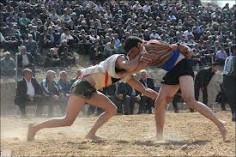
Who are Kermanj and have they achieved anything? The Kurds of Khorasan are called Kermanj . Before dealing with the history of Kermanj Kurds in North Khorasan, some explanations will be provided about the word Kermanj, then the main subject, i.e. the Kurds of Khorasan, will be discussed..
Farouk Safizadeh in the resource of Kermanj Me Noised : "Kermanj, which has been cut short (Kurdish ) and the rest of us (man ) Which is the same as Manna (mannay ) Iste was one of the tribes of Medes who ruled in Zagros in the 9th century BC and joined the Medes during the formation of the Medes" 1. Jonathan Randle wrote about this. : "Kermanji Kurdish... is the language of Kurdish people living in tents"
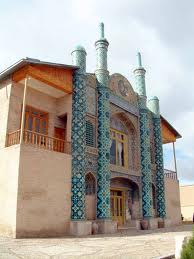
2."Kermanj... apparently refers to some tribes of southern Kurdistan, not as a synonym for the tribe, but as an ethnic label. . Son mi noisad ke kermang ha vaak trin khun kurdi ra darand . Other tribes are simply called Kurds . In North Kurdistan, the word Kermanj is often used in two different meanings :
-a thousand: It is an ethnic label that is used to refer to all the Kurds who speak the northern Kurmanji dialect.
-B:In a more limited sense, it is used to refer to farmers' subjects. The non-tribal farmers of Shataq, who are under the rule of the Garavis, are called Kermanj. Similarly, in Shernak and the surrounding villages, non-tribal farmers are called Kermanj. .
In this way, the single word Kermanj, which is used in the south to refer to the conquerors of the tribe, and in the north is reserved for non-tribal Kurdish subjects; It shows the complex relationship that exists between the tribal and non-tribal parts of the Kurdish society, and this complexity is much more than our super-class theory allows... Kermanj are usually small and independent landowners. … . The Kermanjs here are probably tribal Kurds ( Or a tribe before ) There have been people who have settled in this area on the lands that they have occupied.
3.The word Kermanj in North Khorasan; It is referred to both the Kermanj speaking camp dwellers and in a more general sense to the Kurds who speak the Kermanj dialect. . And when it comes to Kermanj, the Kermanj speakers are considered .
But what history do the Kurds of Khorasan have? Why have the Kurds been moved to Khorasan? Did Kurds live in Khorasan before the arrival of the Kurds during the Safavid period or not?
In relation to the coming of Kurds to Khorasan and its reasons, it was fully explained before .
Since the culture, customs, and beliefs are somehow crystallized in the songs of Kermanji in North Khorasan, better knowledge of Kermanji in Khorasan will lead to a deeper insight into the songs of these people, and an attempt will be made to give more explanation in this regard..
Kalim A. Tohdi, the author of several volumes of the historical movement of the Kurds to Khorasan, writes about the time and the reason why the Kurds were brought to Khorasan. : "The Kermanj of Khorasan, which were transferred to the northern borders of Iran in the beginning of the Safavid government to prevent the invasion of Turkmens and Uzbeks, are under the title of the three great clans of Zafarnolu, Shadlu, Karachurlu"
Kalim A... Tohdi points out that since the Safavid era of Shah Ismail, Kurds, especially Karamanlu, were scattered to this land to defend the borders of Khorasan, and later Shah Ismail's successors continued the policy of transferring Kurds to Khorasan. :
"Shah Abbas, who was a sharp-witted and political king, according to Ibn Umid's philosophy, which he said : The Kurds should be shielded from the disaster, there was an attempt to transfer the Kurds to Khorasan... About fifty thousand families started their great and historic migration from Azerbaijan to the land of Ray, this movement that took place around the year (1005H.Q) It had caused the Kurds to fight for two years in the Jalga of Tehran and Khawar and Ramin.”5
Jonathan Rendell also writes about the migration of Kurds to Khorasan:
"Shah Abbas first to this process ( Migration of Kurds ) Hurry up . There were Kurds who were uprooted from their homeland and sent to the east, first to the border of Azerbaijan, then to Khorasan in front of the Turkmens who still remained there - that is, a thousand miles away from their birthplace - in this way, the Safavids removed the rebellious Kurdish tribes from the borders. They went west and surprisingly they were assigned to guard the other troubled borders of the country and sent other Kurdish tribes to more distant areas, to Hindu Kush in Afghanistan and today's Baluchistan..
Dr. Heshmat A. Tabibi has mentioned in the book of sociology and anthropology of Eilat and Nomads:
Barthold writes in the historical geography of Iran : In order to protect the country from the invasion of the Turkmen and the Uzbeks, Shah Abbas decided to remove the militant Kurds from the western province. (Khorasan )As a result of this decision, five Kurdish provinces were formed in the entire border from Estrabad to Chenaran. .
The Kurdish clans of Khorasan, who were from the Kurdish provinces living in the Ottoman land known as Chamshagazk, came to Iran during the Safavid era because they were Shiite, then they were moved to Khorasan and at the end of the Safavid period, they became known as the Saffron-loving Kurds.. This is the big one 32 Branches are formed and each branch is called "Il" and they are scattered in the cities of Esfrain, Bojnord, Dareh Gaz, Shirvan, Guchan and Neishabur. .
Il Shadlo are also from the Kurdish province of Khorasan, they also migrated from the Caucasus to Azerbaijan, then to Khorasan and settled in its northwest. .
Professor Ismail Hosseinzadeh Buanlu, a university professor in America, has written about the migration of Kurds to Khorasan:
"Kurds migrated to Khorasan mainly during the reign of the Safavid kings and in order to repel the repeated attacks of the Uzbeks, Mongols and Turkmens on the northeastern banks of Iran. .
This migration, which started in the middle of the 10th lunar century, i.e. during the time of Shah Ismail and Shah Tahmasb, reached its peak at the end of this century and the beginning of the 11th century, i.e. during the reign of Shah Abbas. What was at this time? that the Uzbeks had not only conquered Mashhad and made Khorasan their field of conquest; They also trampled the areas of Shahrood, Damghan, Semnan, Varamin, Kashan and Arak. .
The timely migration and confrontation of the Kurds, especially the campaigns of the warriors of the two great tribes, known as Zafaronlu and Shadilo, prevented the further progress of the Uzbeks, and after many bloody campaigns, finally caused them to be expelled from Iran..
Khorasan Pejohi Quarterly also writes about the time and the reason for the forced migration of Kurds from the west to the east of Iran. :
"Historical migration of Kurds under the command of Shah Abbas Safavi around (1007 H.Q) It started during it 40 A thousand families from the Kurds in the west of the country were moved to this region to protect and protect the northeastern borders, which were threatened from time to time by the Turkic tribes, especially the Uzbeks. Let them be a shield against the invasion of the Uzbeks into the inner territory and especially the center of Iran during the Safavid era."
Saleh Mulla Omar Isa also wrote : Shah Abbas I 000/150 He transferred the Kurds to Khorasan to defend Iran's borders against the aggression of foreigners, and the reason for this was that they had special courage in fighting against the aggressor enemies.
Also, the author of the book "Kurds and their land" writes about the settlement of Kurds in Khorasan :
"In the east of the Caspian Sea and in 200 A mile northeast of Mashhad, in Khorasan province, around the cities of Bojnord and Shirvan, there are Kurdish settlements, which are more than a thousand miles away from other Kurds, and their population is about two hundred thousand people.
Ali Khorasani writes in an interview with the Swedish Kurdish Institute's Avashinchap quarterly :
"Khorasan Kurds are made up of Greater Kurdistan... Kurds from Syria, Caucasus, Baku, Turkey, Kurds from southern Iraq, Mako and Mahabad... and Kurds from Afghanistan, Pakistan and India also went to that province from Khorasan."14
Despite the research done on the Kurds of Khorasan and different opinions, one basic question still remains unanswered : Did the Kurds live in Khorasan before the migration of the Safavid era or not?
Although this ambiguity can be resolved based on some opinions; But what is the connection between the Kurds of Khorasan and Turkey?
Is it not possible that a number of Kurds also went from the east of the earth to the west and took the name of Khorasan with them to the Roman currency province, that today the cities of Qochan, Shirvan and the tribes of Kikan, Siokan, and Omran exist in Iran and Turkey according to the opinion of the Swedish Kurdish Institute. To say that all the Kurds of Khorasan came from the west at once; So who are in 500 Did they control these regions and borders last year?
The author of the book "Sociology and Anthropology of Eilat and Nomads" writes about the possibility of some tribes moving from the east to the west. :
"It is probable that the group migration of Iranian tribes and clans from the east of Iran to the west was gradual and these tribes met after being separated from each other in the Zagros mountains and the banks of the Tigris. . And because they were of the same race and spoke the same language, and there was no difference between them in terms of religion, morals, and customs, their mixing and mingling was done easily."15
Minorsky, a Russian Kurdish researcher, also said in a similar opinion at the 20th World Congress of Orientalists :
"Kurds are a nation that originated from eastern Iran" but more research should be done on this matter and this is nothing more than a theory. .
"The truth is that the Kurds lived in Khorasan before the Safavid period . Being a Kurd, Abu Muslim Khorasani's memories of Da'abl Khazai on the way to reach Marv and his encounter with Alevi Kurds, Timur's memories in the book Manam Timur Jahangasha, who meets a group on the way to Guchan, who say :We are Kurds, and at the same time as Timur's period, Clavikho also mentions the presence of Kurds in Khorasan in his travelogue.. Everything is the proof of the presence of Kurds in Khorasan before the Safavid period .
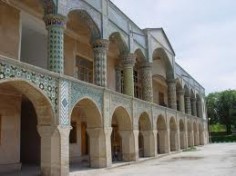
The Kurds of North Khorasan are Shiite, and their population is more than one million people, and the oral literature of these people is under serious damage due to the lack of the Kermanji script of Khorasan. .
Kurds who read the word Iran with an unknown ya and write it like this in Kurdish script(Iran)And(Err)And(R)Any meaning (Holy)And (H)They are from the place where fire was known and needed as the most sacred element in ancient times, so its name comes from (Err)It has been taken and because the land of Iran has been worshiped and sacred like fire (Iran)They put it on it, which means it is a holy land and a beloved, respected and worshiped land. And Arya in a sense (Ari Ha)means those who(R)=(R)They worshiped Ram. That is, they worshiped fire. Therefore, the concept of Aryans or Aryans is completely clear, why it was applied to the people of this land. Later, some non-Kurdish Aryans migrated to India and some to Europe, which today form the Indian branches of Europe. If today we see many similar words in Kermanji and English, German or French languages, it is the result of the same cause of primary affinity..
After the arrival of the Safavids and in order to confront the colonialist and expansionist Ottoman Empire, which considered itself the rightful heir of the Islamic lands, he made the Shia religion official against the Sunnis in Iran..
The formation of a Shia government in Iran, which is considered to be Sunni governments, was not an easy task, therefore, Iran was invaded from all sides, especially from the north-east and west of the country, by the Ottoman Empire and its ally, the Ottoman Empire. He wanted to attack our land from the west, a front was also opened by his Sunni allies in the east, and he expected Bekkan to attack Khorasan and kill, loot and destroy. .
Shah Ismail was the first person who established the Khorasan front against the Uzbeks through the Kurds of Qaramanlu under the command of Bayram Beg Qaramanlu, and after him, his son Shah Tahmasb strengthened the forces of Khorasan by transferring the Kurds of Zanganeh, Chagni, Vazik and Kulharba..
At the end of Sultan Muhammad Safavi's reign and the beginning of the reign of Shah Abbas of Uzbekistan, they increased the intensity of their attacks and turned Khorasan into ruins, and Shah Abbas did not dare to set foot beyond the region and go to Khorasan.. As a result, the cities of Mashhad, Ardakan, Sabzevar, Nishapur, and Sofrain were looted and destroyed one after the other by Abdulmoman Khan Uzbek, and this time was the year 1000 Hijri according to the fifth year of the reign of Shah Abbas. . Esfrain was one of the cities that, like Mashhad, strongly resisted the Uzbek flood. Abu Muslim Khan Chawlshu, the ruler of Esrafin, with a group of Ghazians, Ustad Jaluvakrad, etc., who had gathered in that fort, took care of preserving and guarding the fort, strengthening the tower and ramparts, and they were working on the equipment of the fort. and the siege lasted for four months, there was a huge attack several times, and the besiegers of the fortress lost their courage. In each attack, many Uzbek braves were killed, and the moat of the castle was filled with corpses and dead people. were destroyed…
In general, after four months, Abu Muslim Khan fought and guarded the fort, and the work of the besieged was exhausted.…
“Uzbeks ascended the tower and took control of the castle, killing and looting, and did not spare a breath.. Abu Muslim Khan and some young men defended themselves in one of the towers and fought for three days, and they had arrows in their quiver, bullets and gunpowder with them.. After the gun shot stopped, the Uzbeks knew that they were no longer in a fighting mood, they stormed the tower and sold the lions of men, the precious goods of life, in the bazaar of sincerity, zeal, and masculinity, with daggers and bloodthirsty blades. The Uzbeks started fighting and tasted the unfortunate syrup of death like a man. Kechel Qabad Kalhar, who was among the besieged and prisoners of that tower, and one of the brave Uzbeks who knew him, took pity on his manhood, protected him and left the Uzbek camp safe and sound at night to Iraq. (Iraq Ajam - Qazvin and…)He had come and told the truth of the mentioned case to the servant of Skanderbeg Turkman in a way that became clear.…
Yes, the cities of Khorasan were destroyed one after the other, and their young men and women were left in the dirt and blood, and women and children were taken as captives who were sold in the markets of Khiva and Bukhara, and Shah Abbas was free from any worries in the court. Qazvin was enjoying and drinking and playing.”
In 1001, Farhad Khan Karamanlu, the general of Shah Abbas, captured Gilan and Mazandaran in Ord and approached the borders of Khorasan.. Shah Abbas's army also advanced to Tastam, but when he received a threatening letter from Ameez Abdul Momin Khan, he returned to Qazvin out of fear for his life..
In the seventh year of the reign of Shah Abbas, Farhad Khan, Qaramanlu and his brother Zulfiqar Khan put an end to all the rebellions in Gilan, because in the eighth year of the reign of Khuzestan, Farhad Khan set out to suppress the rebellion in that region.. In the following year, which was the ninth year of the Shah's reign and corresponding to 1004 lunar month, Shah Abbas gathered his forces to move towards Khorasan, because the situation in Khorasan and the adverse effects caused by Shah Abbas's incompetence throughout Iran forced the Shah to change his situation in front of Let the foreigners light up the eastern front so that the internal rebellions subside.


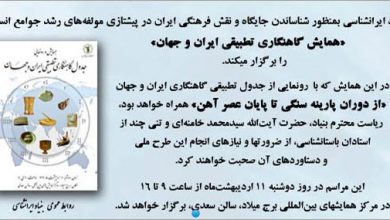
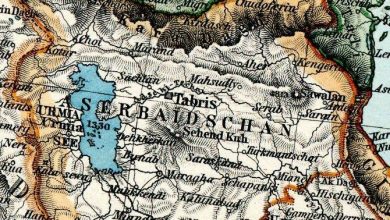
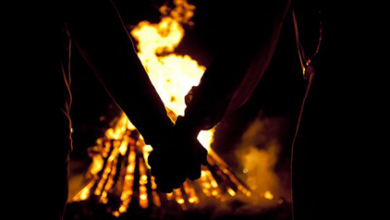
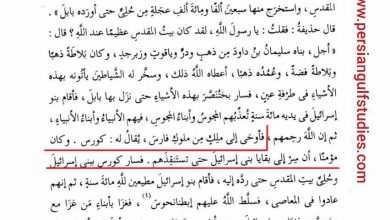
Thank you, it was very interesting